This article contains spoilers for Shazam! Fury of the Gods in its discussion of colonization and parody of the DCEU.
In some ways, Shazam! Fury of the Gods feels like a gentle and unfocused parody of the earlier films in the DC Extended Universe, particularly the films of Zack Snyder.
In some ways, this feels appropriate. After all, Shazam (Zachary Levi) himself originated as Captain Marvel. Whether fairly or not, Captain Marvel has a long history as a Superman doppelganger. He first appeared in a comic book published by DC’s rival, Fawcett Comics, cover dated February 1940. This was about a year and a half after the first appearance of Superman in Action Comics #1, which basically codified the modern idea of the superhero.
The extent to which Captain Marvel is a copy of Superman is a matter of debate. Pointedly, the cover to the character’s first appearance features the character throwing a car, mirroring the cover of Superman’s first appearance featuring the character lifting a car. There was a 12-year legal battle over the character. Ultimately, DC would license the character in the early 1970s, launching a new series in February 1973. It bought the character outright in 1994.
Captain Marvel always existed in conversation with Superman. For example, Mark Waid and Alex Ross’ era-defining epic Kingdom Come culminates in a brawl between the two titans. While Dwayne Johnson fixated on Black Adam as a stepping stone to an ego-driven throwdown with the Man of Steel, Superman was always more tethered to Billy Batson than Teth-Adam. It makes sense that Fury of the Gods is engaged with the earlier DCEU.
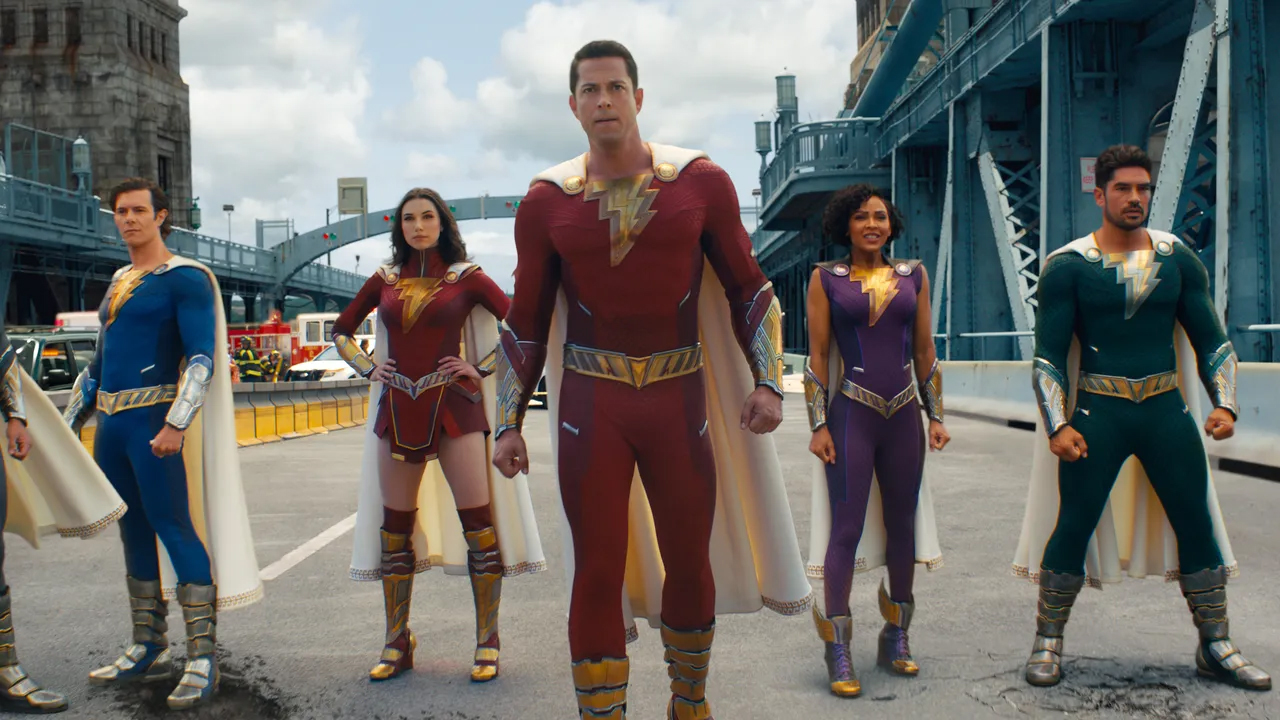
Many of the film’s big beats are from the standard early DCEU playbook. Early in the movie, it is established that Shazam and his allies have not been embraced by local media. The team is dubbed “the Philly Fiascos” by various media outlets, including The Philadelphia Tribune. “Nobody reads the Tribune,” Shazam complains to the pediatrician (P.J. Byrne) that he has chosen as his therapist. He later dismisses media criticism of his heroism as “fake news.”
This is similar to how the media treats Superman (Henry Cavill) in Man of Steel and Batman v Superman, turning the superhero into the focus of an ongoing media debate about his place in the world. Monuments are constructed and defaced. Hearings are held. Pundits weigh in on late-night chat shows. The Marvel Cinematic Universe (the MCU) hasn’t really dealt with this sort of story since Tony Stark’s (Robert Downey Jr.) issues in Iron Man 2.
The difference is one of tone. Batman v Superman uses this ongoing media debate as an exploration of American self-image, interrogating the idea of a uniquely powerful entity using its strength to radically alter the world in which it exists. Fury of the Gods treats it as a recurring joke, finding it amusing that Philadelphia might possibly want accountability from its team of superpowered vigilantes. Those news reports just dampen the heroes’ moods.
There are other similarities as well. Batman v Superman ends with a heroic sacrifice and funeral for Superman, leading to the character’s resurrection in Justice League. The climax of Fury of the Gods features Shazam’s death, a quick funeral, and an immediate resurrection. It all plays so fast that there is no sense the audience is meant to take it seriously. It feels more like a joke at the expense of Superman’s death and return than a plot beat of itself.
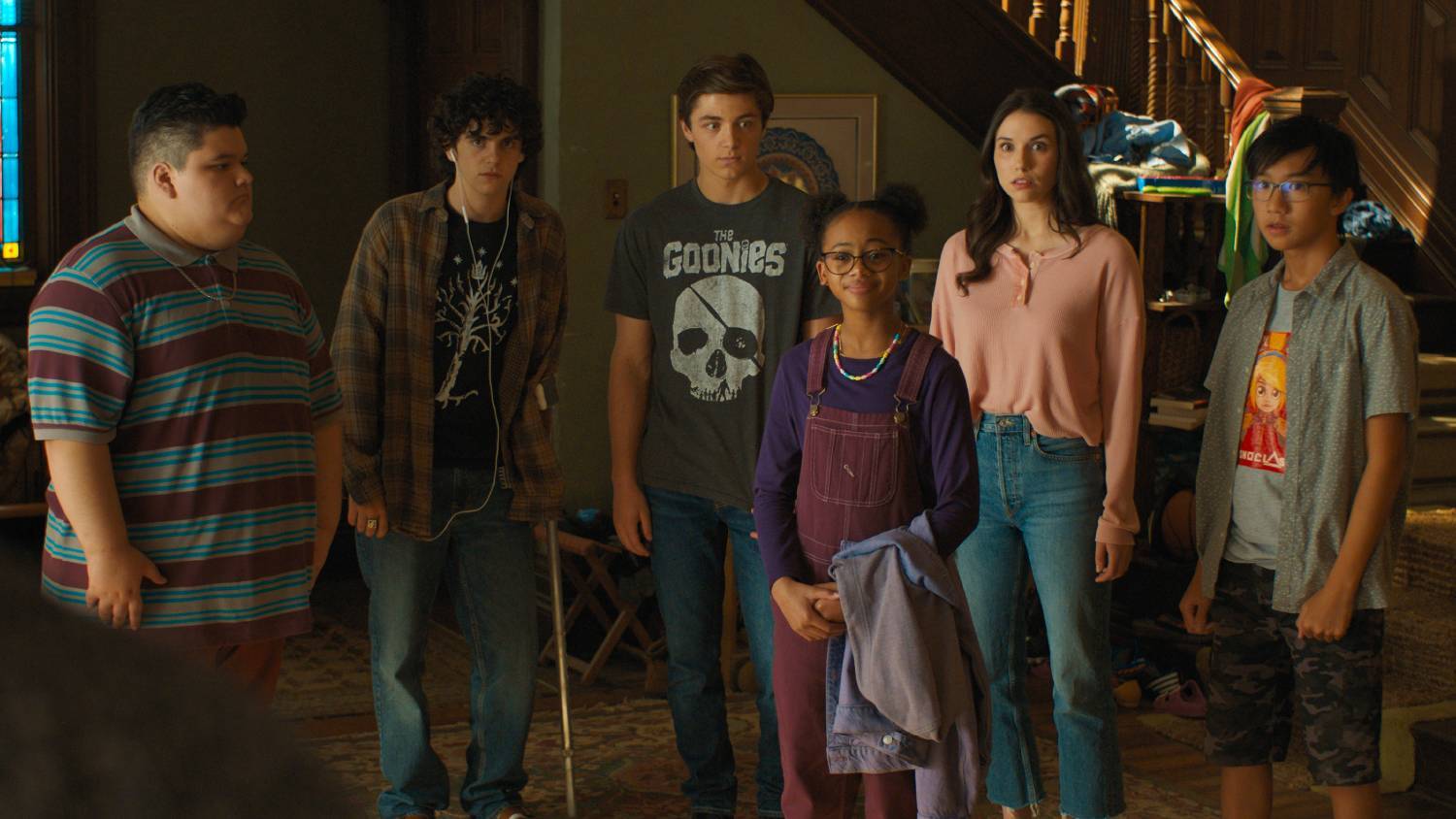
There are more fundamental similarities. The villains of Fury of the Gods are the Daughters of Atlas, Hespera (Helen Mirren), Kalypso (Lucy Liu), and Anthea (Rachel Zegler). Like the Kryptonians in Man of Steel, they are criminals exiled from this plane of reality. General Zod (Michael Shannon) and his followers were sent to the Phantom Zone for their attempted coup on Krypton, released after the planet’s destruction. The Daughters of Atlas return to Earth after the destruction of the Wizard’s (Djimon Hounsuo) staff at the end of Shazam!
Of course, the idea of an ancient returning evil is a standard comic book trope. There are even a couple of Marvel Cinematic Universe films that employ the cliché. In Thor: The Dark World, the Dark Elves return generations after the Asgardian King Bor (Tony Curran) attempted genocide against them. In Thor: Ragnarok, the death of Odin (Anthony Hopkins) allows his daughter Hela (Cate Blanchett) to return and reap havoc. These are the exceptions that prove the rule.
In the MCU, returning evils are often from within living memory: Ivan Vanko (Mickey Rourke) in Iron Man 2, whose dad (Yevgeni Lazarev) was exploited by Tony’s father (John Slattery); Aldrich Killian (Guy Pearce) from Iron Man 3, avenging a snub from Tony over a decade prior; HYDRA in Captain America: The Winter Soldier, the villains of the previous film; Erik (Michael B. Jordan) in Black Panther, T’Challa’s (Chadwick Boseman) abandoned cousin.
In contrast, early DCEU movies have a preoccupation with the return of threats from ancient history and outside reality as the characters understand it. In Man of Steel, Zod and his followers return from the Phantom Zone. In Wonder Woman, Ares (David Thewlis) returns from an ancient world of myths and gods. Zack Snyder’s Justice League depicts Darkseid’s (Ray Porter) second invasion of Earth, with the first taking place outside of recorded memory.
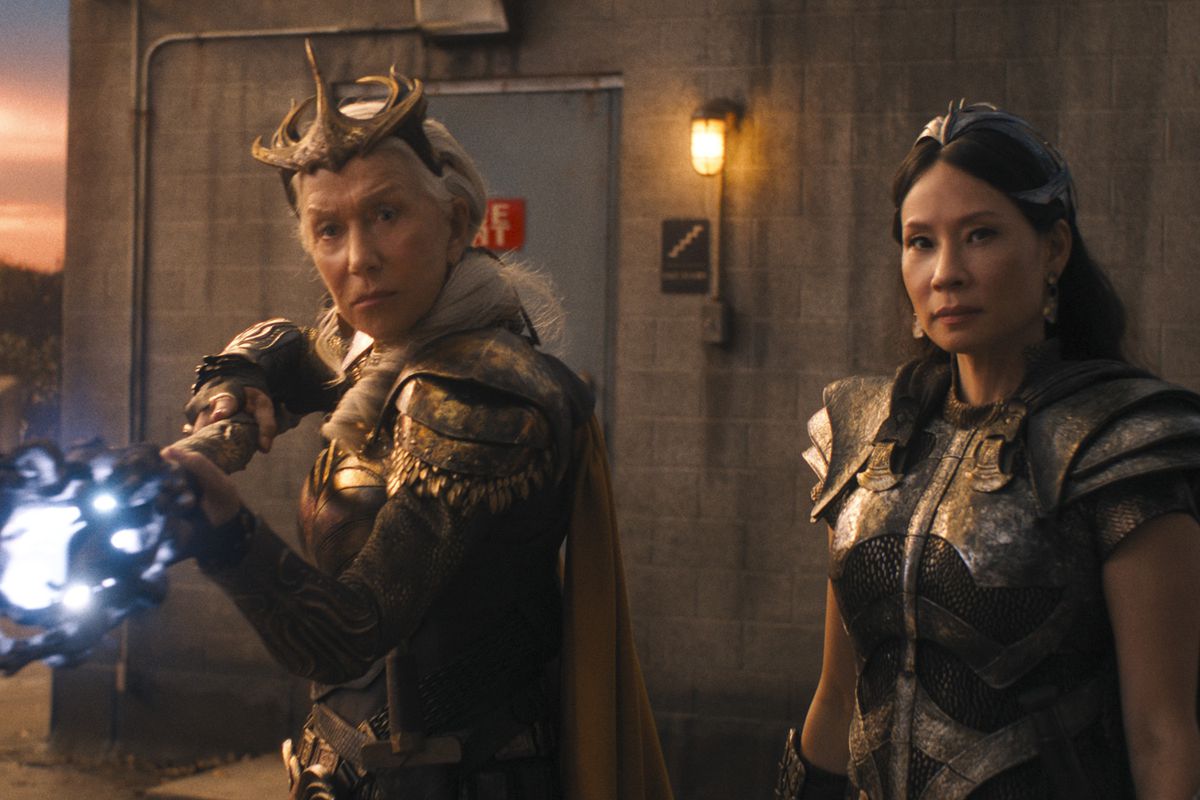
The Daughters of Atlas are a continuation of this trend. Their endgame is similar to the evil plans that motivated Zod in Man of Steel and Ares in Wonder Woman and what Steppenwolf (Ciarán Hinds) attempted in Zack Snyder’s Justice League. There’s a fascinating recurring fixation in the DCEU with the idea of colonization and terraforming, of Earth being invaded and remade in the image of another (often dead or decaying) world.
In Man of Steel, Zod plans to use a Kryptonian World Engine to restore Krypton on Earth. In Wonder Woman, Ares hopes to help mankind destroy itself so that he can restore his own lost world of myth and legend. In Zack Snyder’s Justice League, Steppenwolf plans to unleash the Unity, which “cleanses a planet with fire, transforming it into a copy of the enemy’s world.” The franchise’s recurring fear isn’t just the destruction of all life on Earth; it’s the building of a new reality atop the ruins.
This is another narrative trope that distinguishes the DCEU from the MCU. While the MCU features plenty of alien invasions in movies like The Avengers or Guardians of the Galaxy, and many attempts to wipe out unimaginably large numbers of people like in Avengers: Age of Ultron or Avengers: Infinity War, the only movie that features a villain planning to overwrite a living world is Guardians of the Galaxy Vol. 2, which plays more as a metaphor about narcissistic parenting.
Of course, it’s easy to understand where at least some of this fear comes from. As has been widely noted, the modern superhero blockbuster exists in the shadow of 9/11 and the War on Terror. The modern superhero genre is closer to the war movie than to classic pulp adventures. Even in Fury of the Gods, Hespera describes Shazam as a soldier and Eugene (Ian Chen) prepares for superhero missions by playing wargames. Even the child-oriented superhero film is still framed as a war movie.
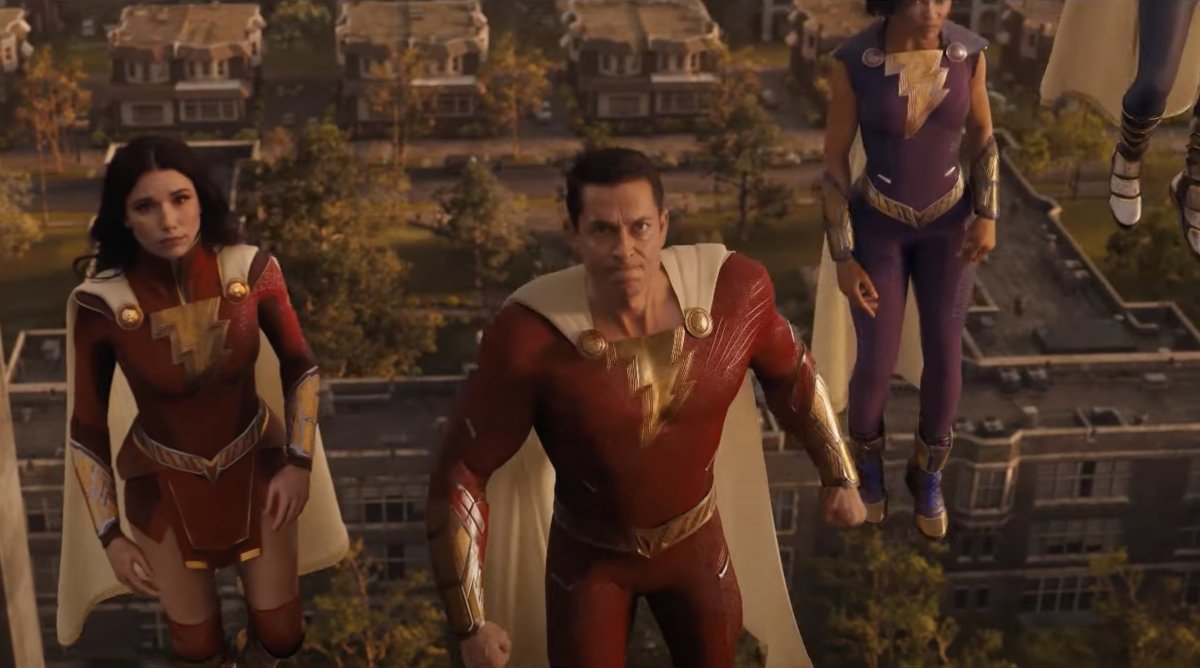
The War on Terror sent American troops overseas to countries like Iraq and Afghanistan. There is an imperialist framing of those conflicts. Two months after the Invasion of Iraq, Thomas L. Friedman described the country as “a 51st state of 23 million people.” Early reports from Kabul discussed casinos, boutique hotels, commercial radio stations, and golf clubs opening in the wake of American occupation. Iranian president Mahmoud Ahmadinejad noted that America “planted a tree in Iraq.”
As was the case with Vietnam War narratives in franchises like Star Wars, Predator, and Rambo, there is a sense of inversion in this fear of colonization and imperialism. Just as those Vietnam-inflected war movies allowed their All-American heroes to position themselves as insurgents and guerrillas, these narratives of colonization allow superheroes to position themselves in opposition to that sort of invasion and colonization. Fury of the Gods continues that trend.
Taking a cue rather literally from Ahmadinejad’s reading of the situation, Kalypso plants a seed from the World Tree in Citizens Bank Park. This is the last relic of her ancient culture, and it was never meant to grow on this soil. The tree grows quickly, but it is monstrous. It gives birth to a host of grotesque mythic entities: harpies, cyclopes, minotaurs, unicorns, and manticores. This seems like a rather modest riff on what Zod, Ares, and Steppenwolf attempted in earlier films.
To be fair, it’s also possible to read these invasions in a less literal and more abstract way. After all, it’s telling that Ares, Steppenwolf, and the Daughters of Atlas are all positioned as mythic creatures. Even Zod’s followers are framed as the last survivors of a dead world; if Superman is a “uniquely American hero” by virtue of his immigrant background, arriving to a new world and making something of himself there, then it stands to reason that Krypton is a stand-in for the old world. In Man of Steel, Krypton shares older European preoccupations with bloodlines, classes, and houses.
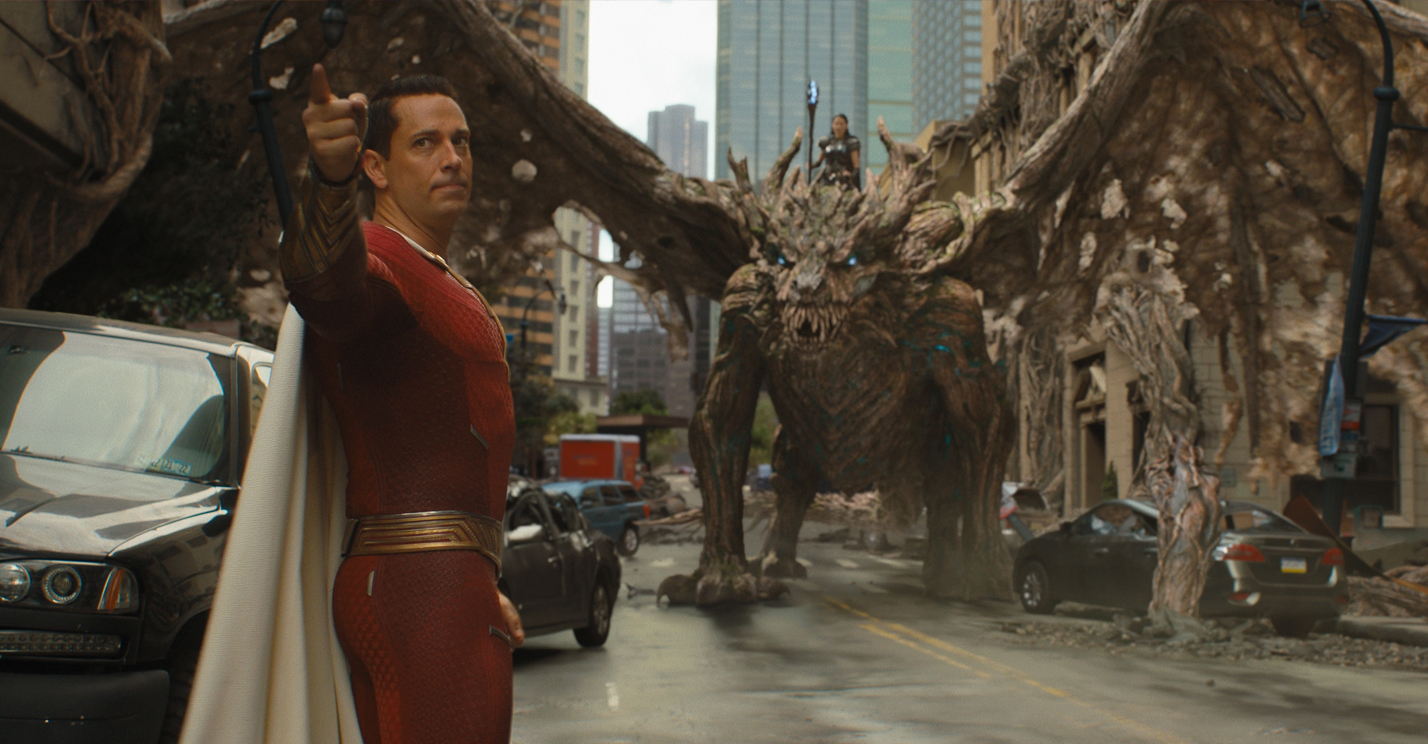
As such, these attempts to overwrite the world are not just literal or physical intrusions by outside forces. They are the past trying to colonize the present, to override the modern world with a return to some lost and mythic past. Crucially, the past that villains like Ares and Kalypso aim to recreate never actually existed. It’s a timely metaphor, particularly when one of the dominant strands in both political and cultural discourse is an attempt to revive some imagined and idealized past.
In many ways, the earlier DCEU movies were about the rejection of that sort of toxic all-consuming nostalgia, the desire to rewrite reality to conjure some lost fantasy into being. Superman understands that Krypton is gone. Diana (Gal Gadot) believes that the past cannot be revived. Even in Zack Snyder’s Justice League, Victor Stone (Ray Fisher) rejects the comforting nostalgic fantasy of a life he used to have, instead accepting the world as it is.
Shazam! Fury of the Gods doesn’t really think too much about this. The film’s ending seems to suggest that some relics of this attempted colonization linger on, and the heroes will eagerly embrace this nostalgia for imagined worlds. Certainly, the warped world tree remains. Perhaps this is appropriate, given indications that – with James Gunn and Peter Safran’s plans for the larger shared universe – the film itself might soon be rendered a nostalgic and imagined past.


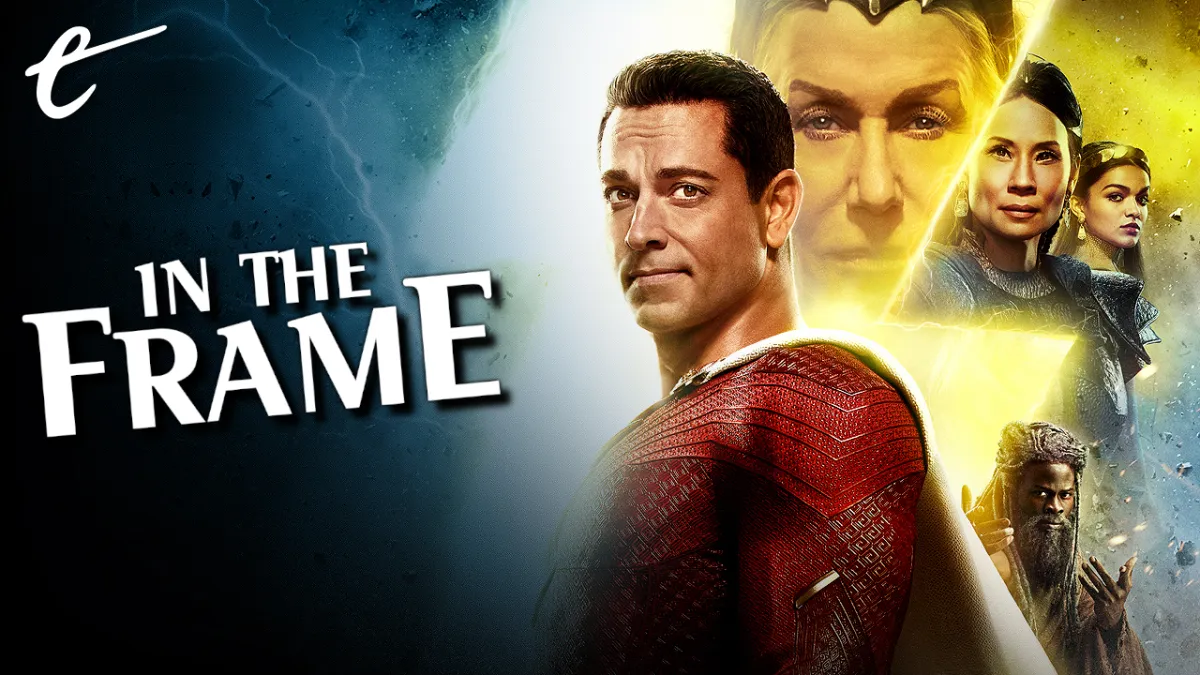




Published: Mar 17, 2023 11:00 am